
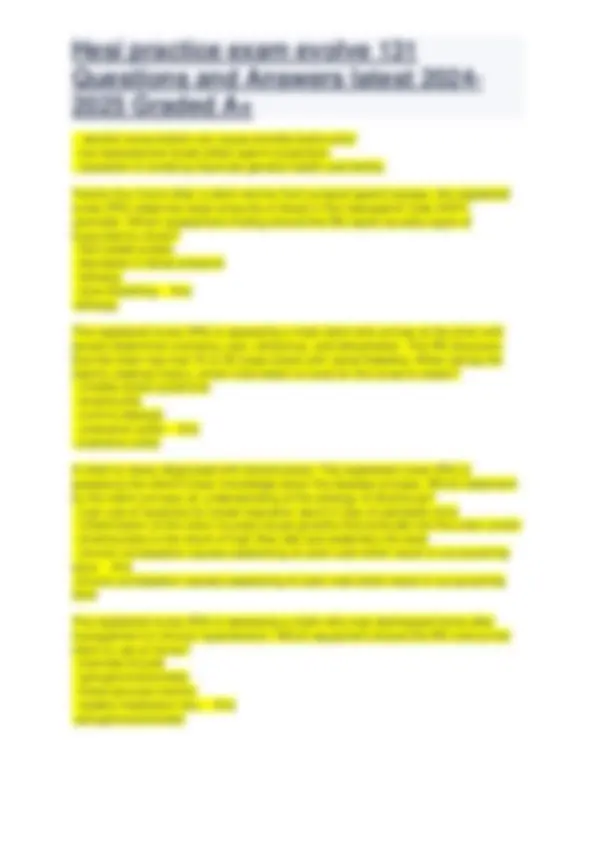
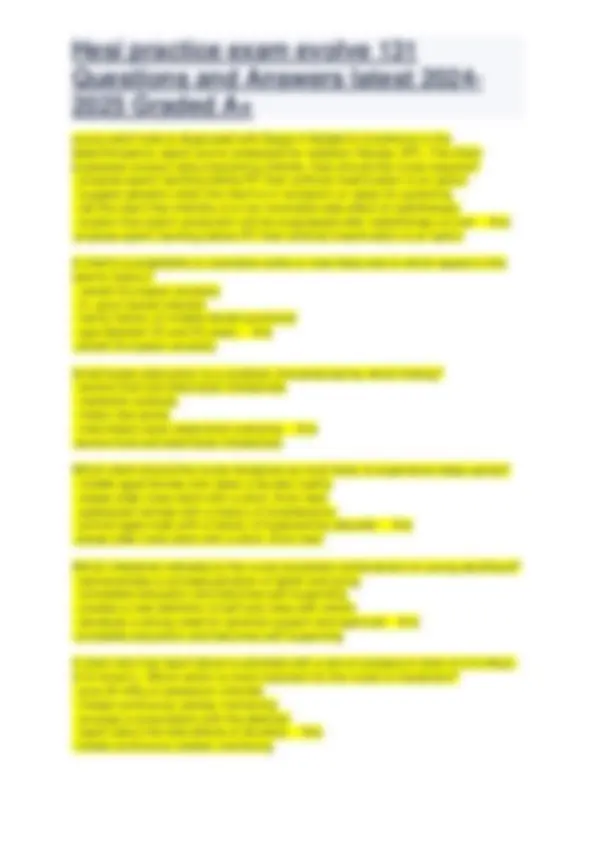
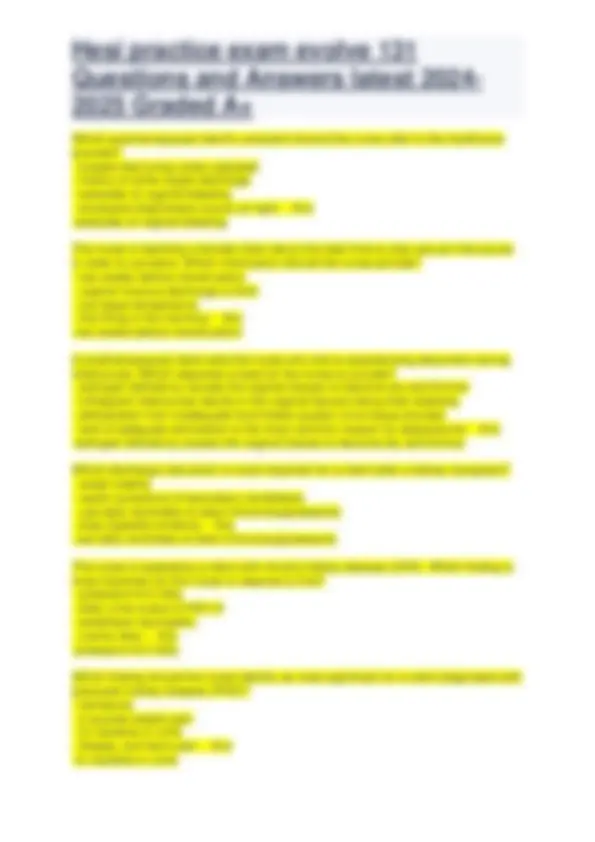
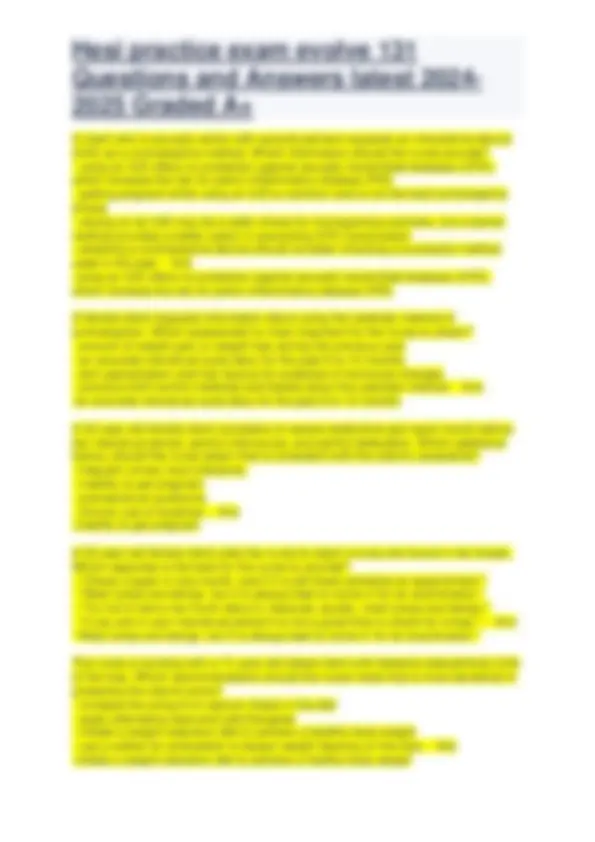
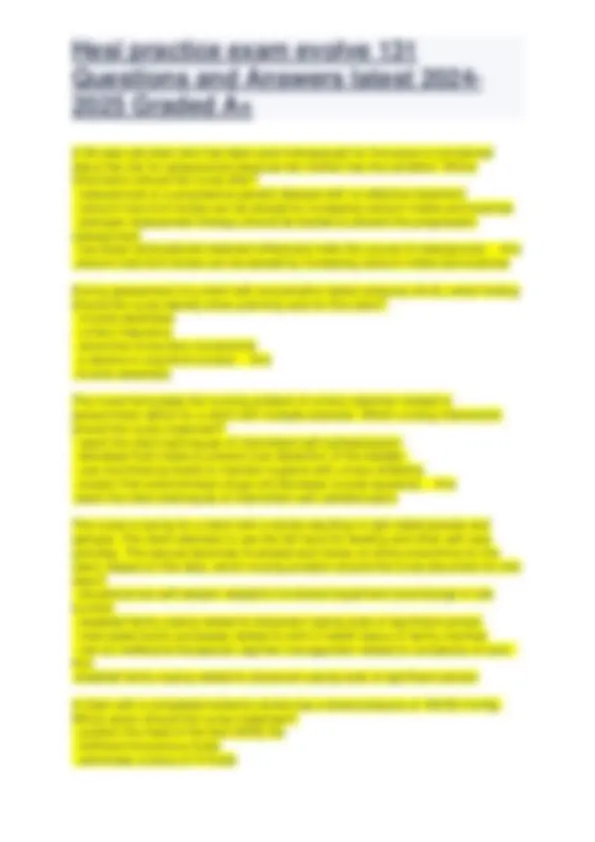
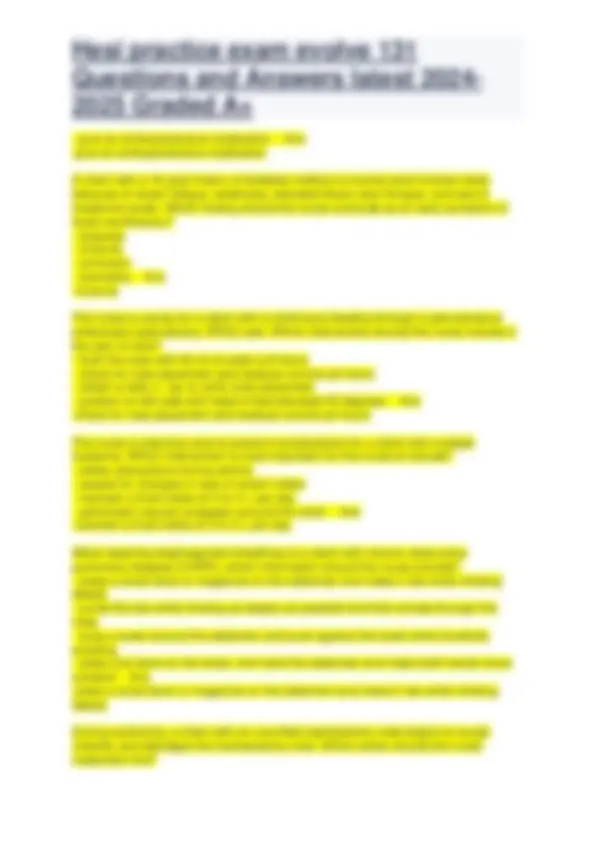
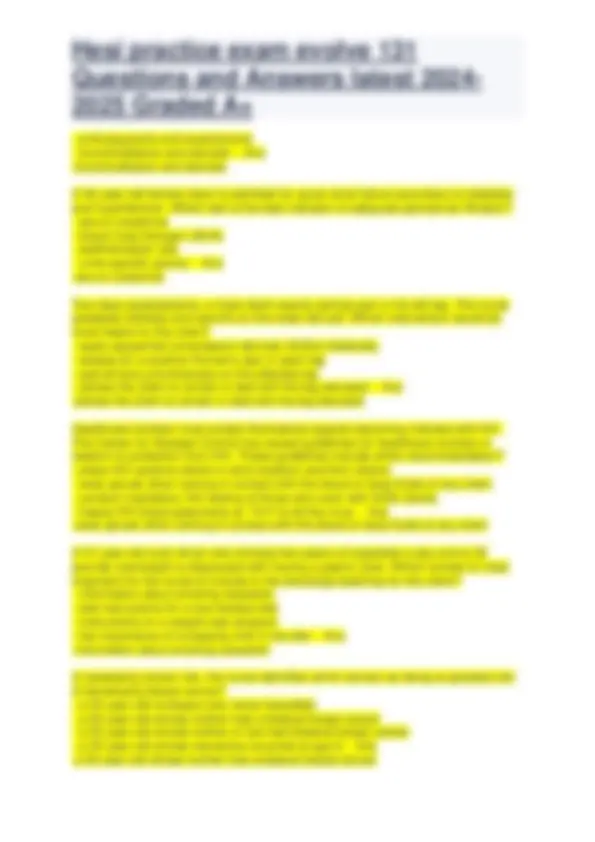
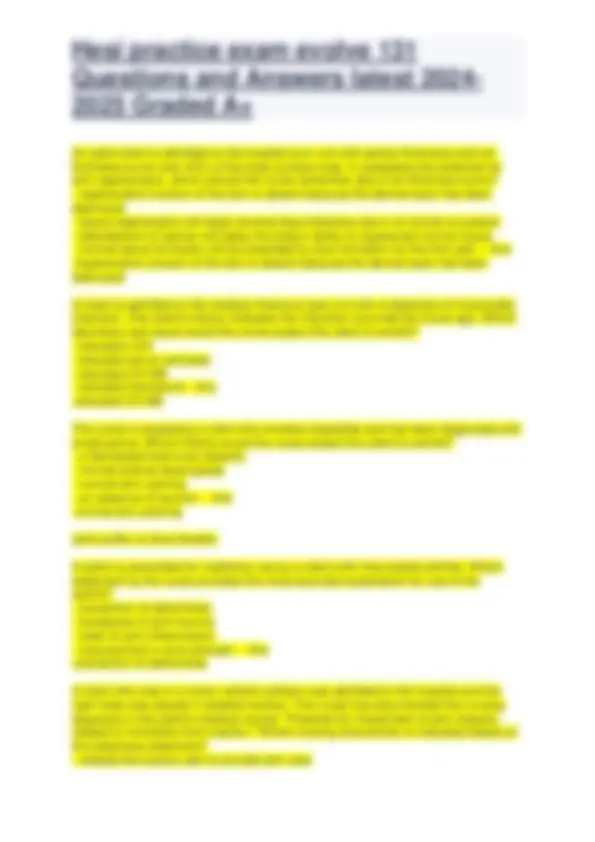
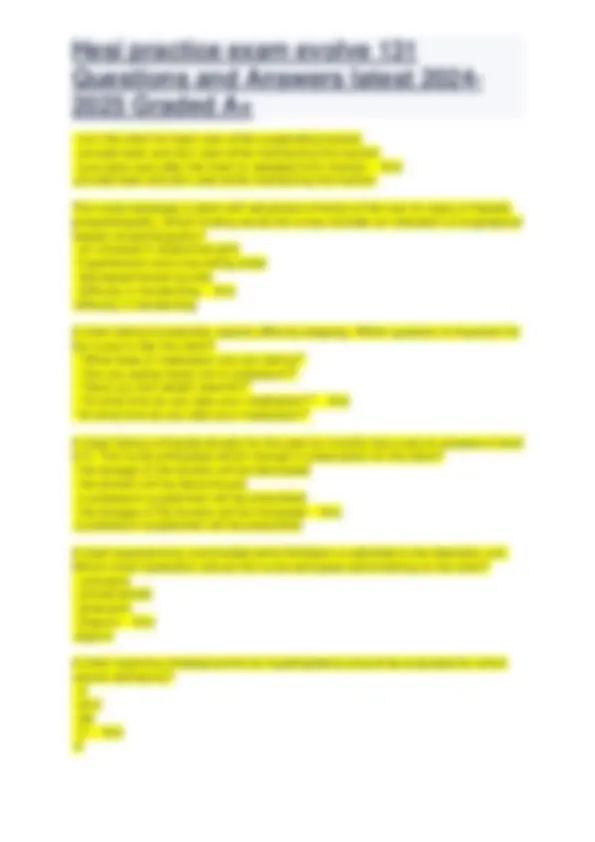
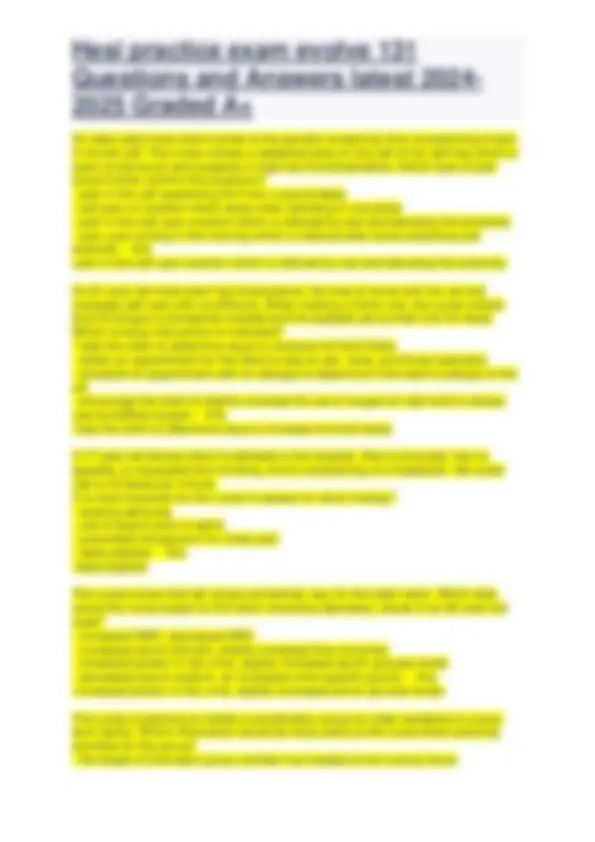
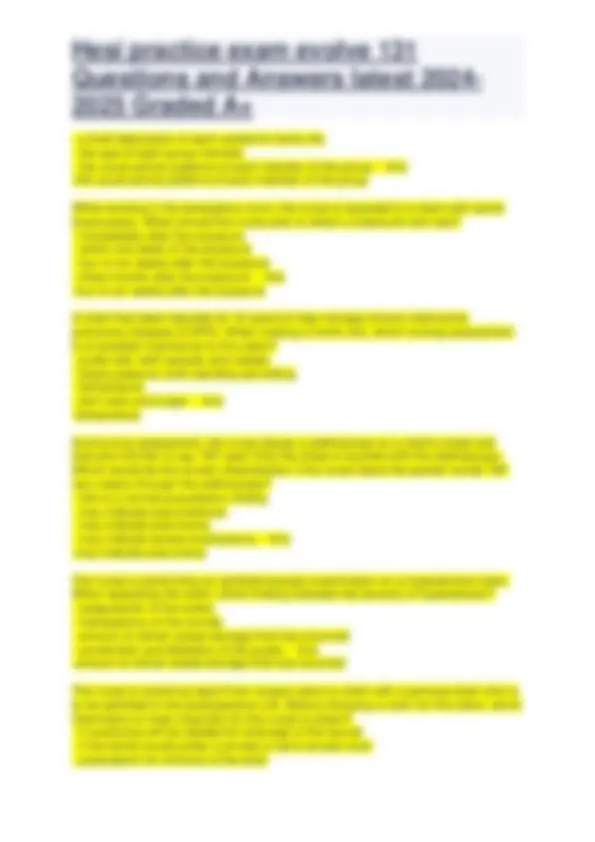
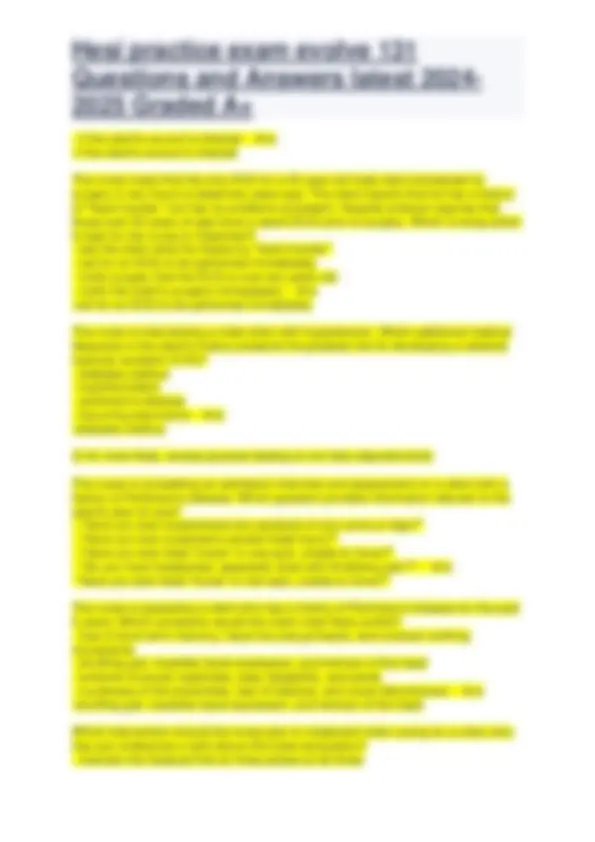
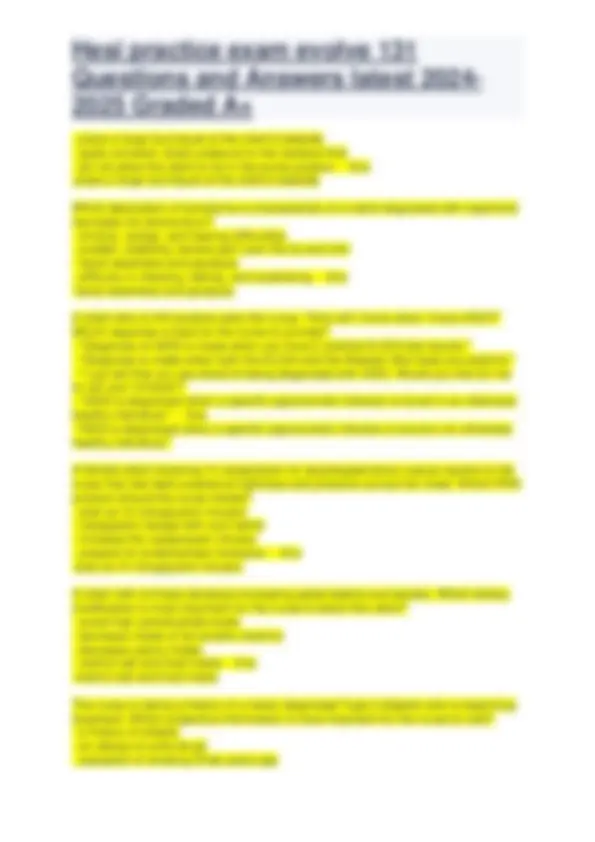
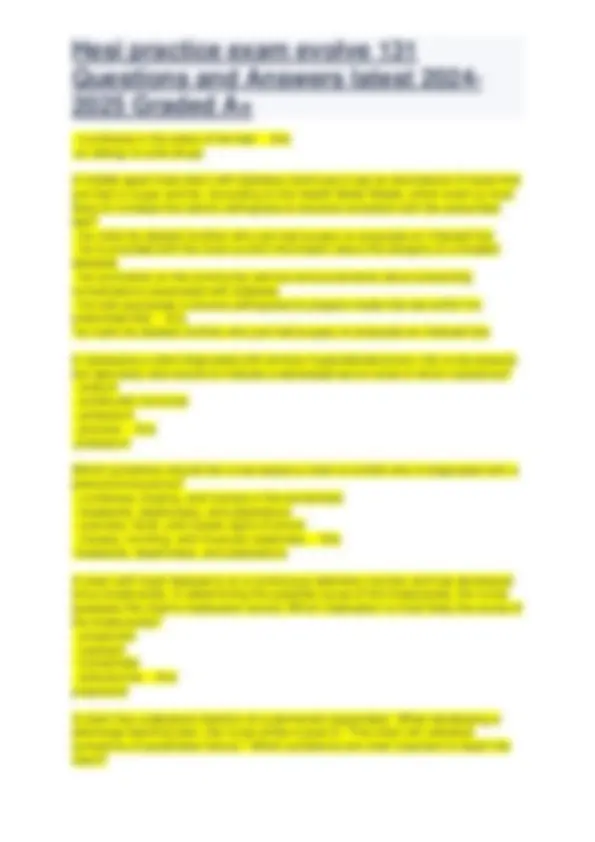
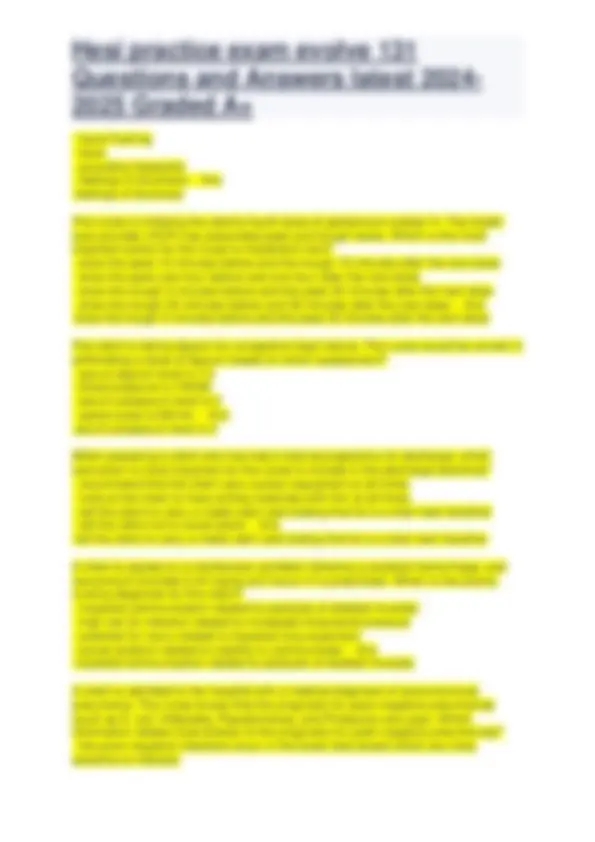
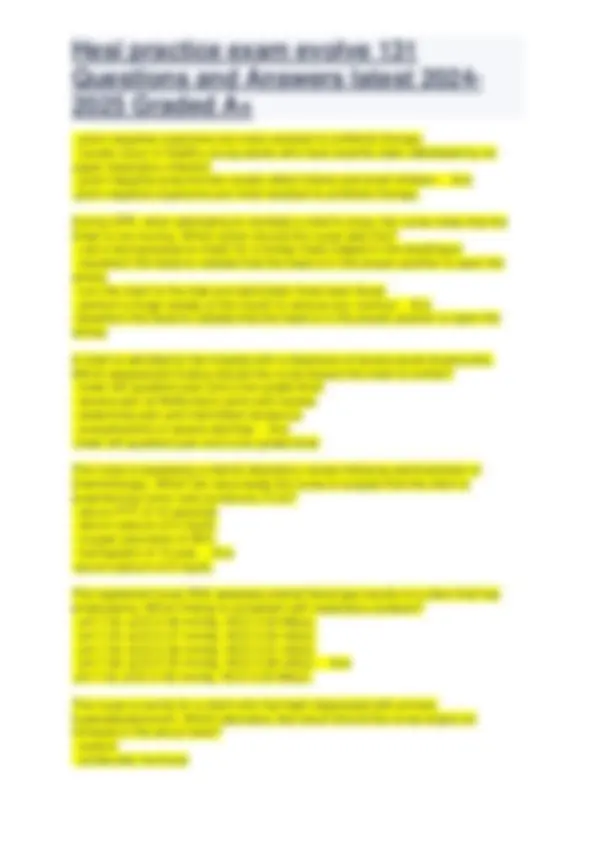
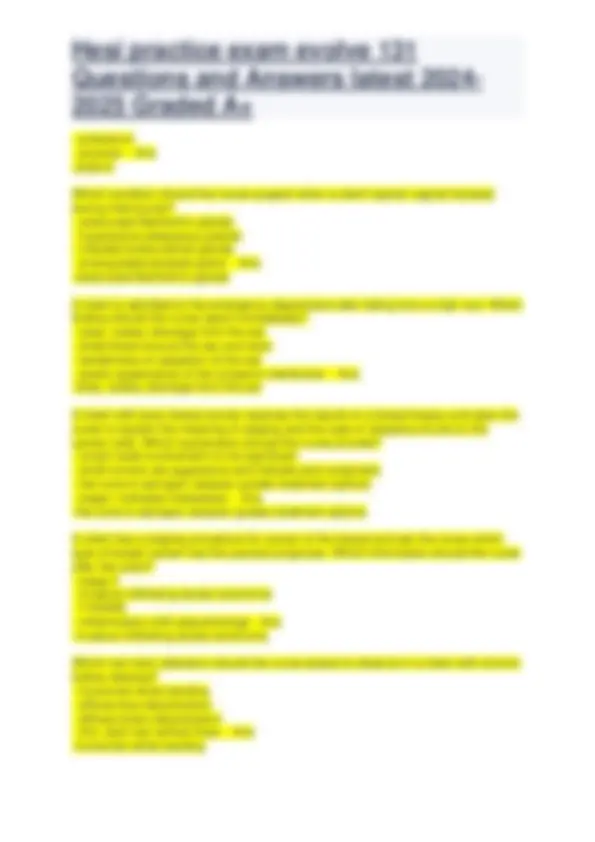
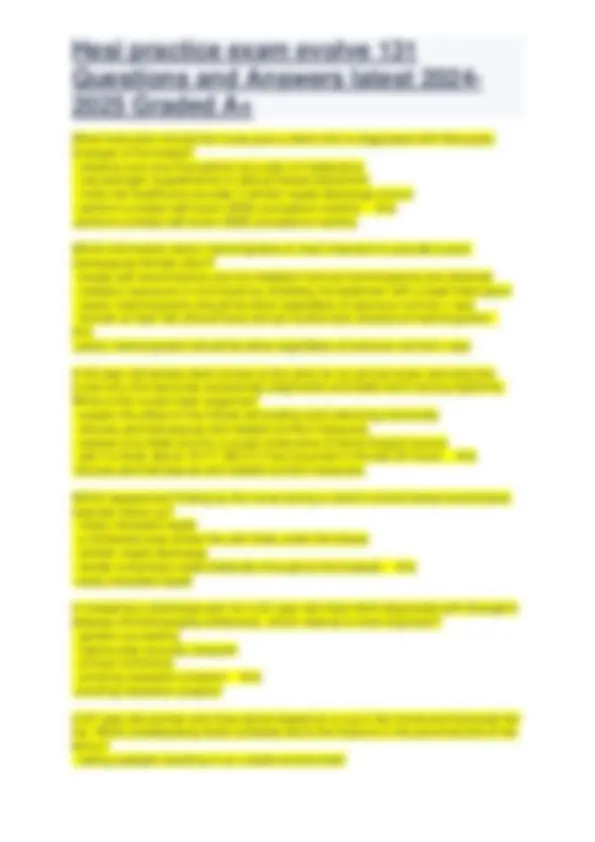
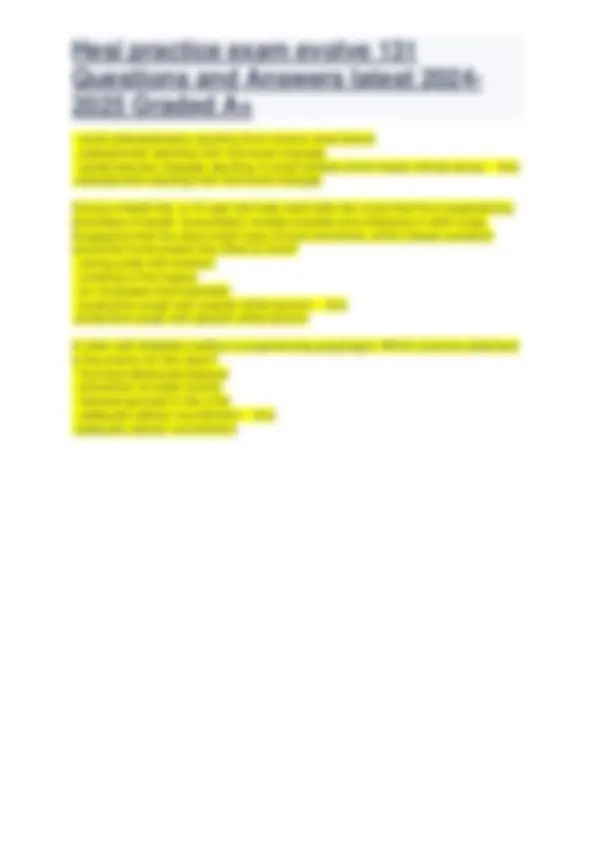


Study with the several resources on Docsity

Earn points by helping other students or get them with a premium plan


Prepare for your exams
Study with the several resources on Docsity

Earn points to download
Earn points by helping other students or get them with a premium plan
Community
Ask the community for help and clear up your study doubts
Discover the best universities in your country according to Docsity users
Free resources
Download our free guides on studying techniques, anxiety management strategies, and thesis advice from Docsity tutors
Hesi practice exam evolve 131 Questions and Answers latest 2025 Graded A+.pdf
Typology: Exams
1 / 27

This page cannot be seen from the preview
Don't miss anything!




















An adult client who is hospitalized after surgery reports sudden onset of chest pain and dyspnea. The client appears anxious, restless, and mildly cyanotic. The nurse should further assess the client for which condition?
A client presents with chronic venous insufficiency. Which assessment finding should the nurse anticipate?
young adult male is diagnosed with Stage 4 Hodgkin's lymphoma in the abdominopelvic region and is scheduled for radiation therapy (RT). The client expresses concern about becoming infertile. How should the nurse respond?
Which postmenopausal client's complaint should the nurse refer to the healthcare provider?
After checking the urinary drainage system for kinks in the tubing, the nurse determines that a client who has returned from the post-anesthesia care has a dark, concentrated urinary output of 54 mL for the last 2 hours. Which priority nursing action should be implemented?
A client who is sexually active with several partners requests an intrauterine device (IUD) as a contraceptive method. Which information should the nurse provide?
An adult client is admitted to the hospital burn unit with partial-thickness and full- thickness burns over 40% of the body surface area. In assessing the potential for skin regeneration, which should the nurse remember about full-thickness burns?
A client who is receiving chemotherapy asks the nurse, "Why is so much of my hair falling out each day?" Which response by the nurse best explains the reason for alopecia?